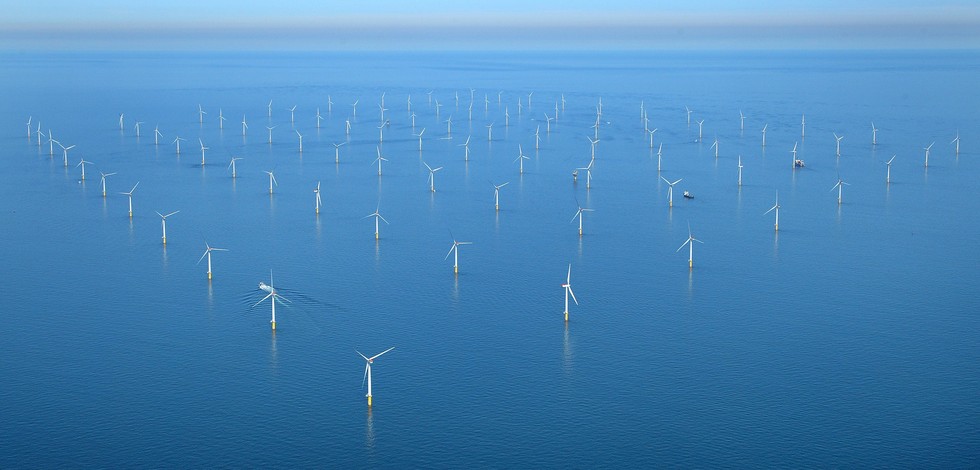Instituto Português do Mar e da Atmosfera (IPMA)
Type of resources
Available actions
Topics
Keywords
Contact for the resource
Provided by
Years
Formats
Representation types
Update frequencies
status
Resolution
-
The three digital maps provided in this product aim to assess the degree of Offshore windfarm siting suitability existing over a geographical area with a focal point where waters of France and Spain meet in Biscay Bay on 500 m depth. The maps display respectively the spatial distribution of the average and lowest windfarm siting suitability scores along with the average wind speed distribution over a time period of 10 years. They are part of a process set up to assess the fit for use quality of the currently available datasets to support a preliminary selection of potential offshore sites for wind energy development. To build these maps, GIS tools were applied to several key spatial datasets from the 5 data type domains considered in the project: Air, Marine Water, Riverbed/Seabed, Biota/Biology and Human Activities, collated during the initial stages of the project. Initially, each selected dataset was formatted and clipped to the study area extent and spatially classified according to suitability scores, to define raster layers with the variables depicting levels of current anthropogenic and environmental spatial occupation of activities, seabed depth and slope, distances to shoreline, shipping intensity, mean significant wave height, and substrate type. These pre-processed layers were employed as inputs for applying a spatial multi-criteria model using a wind farming suitability classification based on a discrete 5 grades index, ranging from Very Low up to Very High suitability. In adition to suitability maps, an average wind speed spatial distribution map for a 10 years period, at 10 m height, was obtained over the study area from the raster processing of a wind speed time series of monthly means available from daily wind analysis data. The characteristics of the datasets used in this exercise underwent an appropriateness evaluation procedure based on a comparison between their measured quality and those specified for the product. The study area, located in the Biscay Golf includes a coastal zone of Spain and France. Consequently, some zones are subject to constraints to offshore windfarm implementation due to environmental protection, visual impacts and seafoor attributes. Data gaps exist with an emphasis on fishing activity and distribution of essential habitats and species. All the spatial information made available in these maps and from the subsequent appropriateness analysis of the datasets, contributes to a clearer overview of the amount of public-access baseline knowledge currently existing for the North Atlantic basin area.
-
The three digital maps provided in this product aim to assess the degree of Offshore windfarm siting suitability existing over a geographical area with a focal point where waters of France and Spain meet in Biscay Bay on 500 m depth. The maps display respectively the spatial distribution of the average and lowest windfarm siting suitability scores along with the average wind speed distribution over a time period of 10 years. They are part of a process set up to assess the fit for use quality of the currently available datasets to support a preliminary selection of potential offshore sites for wind energy development. To build these maps, GIS tools were applied to several key spatial datasets from the 5 data type domains considered in the project: Air, Marine Water, Riverbed/Seabed, Biota/Biology and Human Activities, collated during the initial stages of the project. Initially, each selected dataset was formatted and clipped to the study area extent and spatially classified according to suitability scores, to define raster layers with the variables depicting levels of current anthropogenic and environmental spatial occupation of activities, seabed depth and slope, distances to shoreline, shipping intensity, mean significant wave height, and substrate type. These pre-processed layers were employed as inputs for applying a spatial multi-criteria model using a wind farming suitability classification based on a discrete 5 grades index, ranging from Very Low up to Very High suitability. In adition to suitability maps, an average wind speed spatial distribution map for a 10 years period, at 10 m height, was obtained over the study area from the raster processing of a wind speed time series of monthly means available from daily wind analysis data. The characteristics of the datasets used in this exercise underwent an appropriateness evaluation procedure based on a comparison between their measured quality and those specified for the product. All the spatial information made available in these maps and from the subsequent appropriateness analysis of the datasets, contributes to a clearer overview of the amount of public-access baseline knowledge currently existing for the North Atlantic basin area.
-

-

-

-

-

-

-

-

 Catalogue PIGMA
Catalogue PIGMA